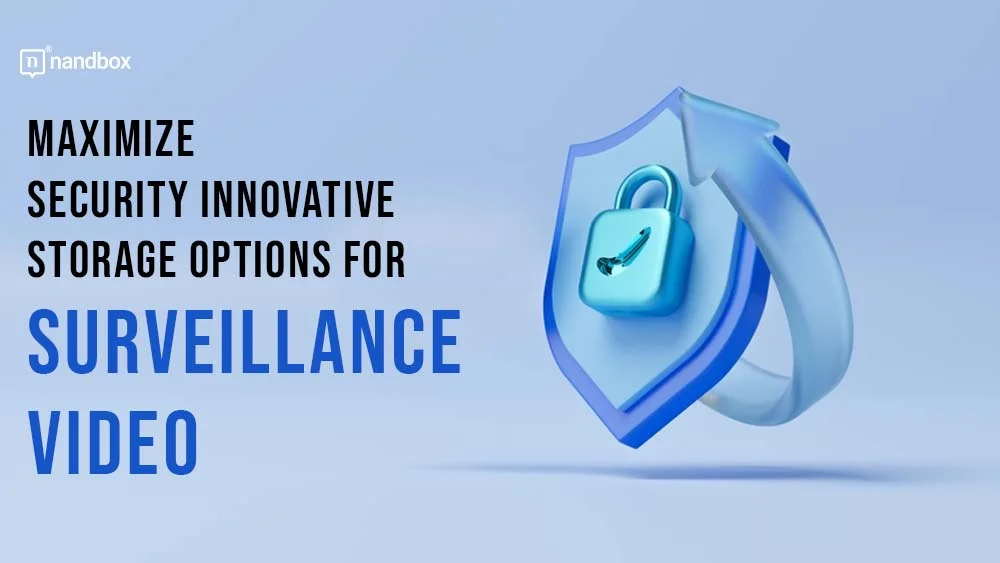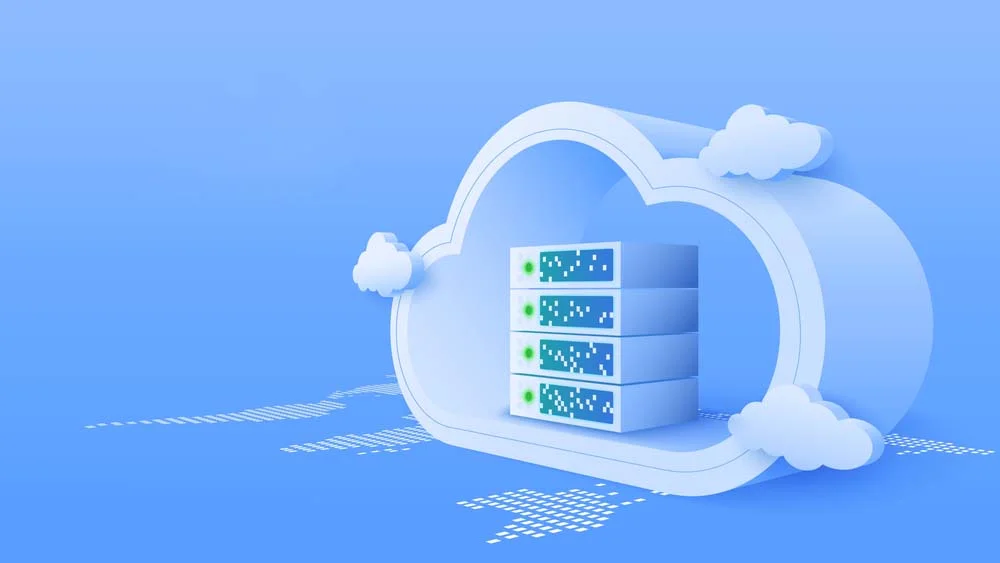Securing surveillance video is crucial. Whether it’s for home, business, or any other setup, you need the best storage solutions to keep your footage safe and accessible. This article explores innovative ways to store surveillance videos, from traditional methods to cutting-edge technology.
In this article, you will learn about surveillance video storage, including the challenges you face. Next, we will compare traditional and modern storage solutions, highlighting their pros and cons. We will explore cloud-based options and cutting-edge on-premises systems, showing you how these can enhance security.
Encryption, access controls, and scalability are also on the topic. You’ll discover how to protect your data with advanced security measures and plan for future growth. By the end, you will be equipped to choose the right storage solution for your needs and make sure your surveillance videos are secure.
Understanding the Basics of Surveillance Video Storage
What is Surveillance Video Storage?
Surveillance video storage refers to the methods and systems used to store footage captured by security cameras. This footage is crucial for monitoring, security, and reviewing events. Storage solutions can range from simple local storage on DVRs (Digital Video Recorders) to complex cloud-based systems. As surveillance technology advances, the need for robust, secure, and efficient storage options has grown exponentially.
Key Challenges in Storing Surveillance Footage
Storing surveillance video presents several challenges. One major issue is the sheer volume of data. High-definition cameras can generate terabytes of data, requiring significant storage capacity. Another challenge is ensuring video backup. Losing footage due to system failures or storage corruption can be catastrophic, especially in critical security scenarios. Additionally, maintaining the integrity and security of the footage stored is important to prevent unauthorized access and tampering. Storage solutions must also comply with legal and regulatory requirements, which can vary widely by region and industry.
The Evolution of Storage Technologies
Storage technologies for surveillance video have evolved significantly over the years. Initially, most systems relied on analog tape recordings, which were bulky and had limited storage capacity. With the advent of digital technology, DVRs became popular, offering better storage efficiency and easier access to recorded footage. Today, Network Video Recorders (NVRs) and cloud-based storage solutions dominate the market. NVRs connect to IP cameras over a network, allowing for centralized and scalable storage. Cloud storage offers even greater flexibility, enabling remote access and extensive video backup capabilities. Hybrid solutions that combine on-premises and cloud storage are also gaining traction, providing a balance of local control and remote accessibility.
Traditional Storage Solutions
On-Premises Servers and DVRs
On-premises servers and DVRs have been a staple in surveillance video storage. These systems store video footage locally, often in a dedicated server room. DVRs (Digital Video Recorders) convert analog video to digital format and save it on hard drives. They are easy to set up and use, making them a popular choice for small businesses and residential security systems. On-premises servers provide more storage capacity and can support multiple cameras, offering better scalability for larger setups.
NAS (Network-Attached Storage) Systems
NAS (Network-Attached Storage) systems are another traditional storage solution widely used in surveillance. A NAS is a dedicated file storage device connected to a network, allowing multiple users and devices to access the stored data. For surveillance, NAS systems offer several advantages. They provide centralized storage for video footage, making it easier to manage and access recordings. They also support large storage capacities, with the ability to add more drives as needed. Additionally, NAS systems often come with built-in redundancy features, like RAID (Redundant Array of Independent Disks), ensuring data protection and reliability.
Common Security Risks with Traditional Storage
Traditional storage solutions come with their own set of security risks. Physical security is a major concern. On-premises servers and DVRs are vulnerable to theft, vandalism, and natural disasters. If the equipment is damaged or stolen, the stored footage can be lost permanently. Network security is another issue. NAS systems, being network-connected, are susceptible to hacking and unauthorized access. Without proper security measures, like firewalls and encryption, your surveillance footage can be compromised. Regular software updates and strong access control policies are essential to mitigate these risks and ensure the safety of your video backup.
Innovative Cloud-Based Storage Solutions
Benefits of Cloud Storage for Surveillance Video
Cloud storage offers several advantages for surveillance video. One major benefit is scalability. You can easily increase storage capacity as your needs grow, without investing in new hardware. Cloud storage also provides remote access, allowing you to view footage from anywhere with an internet connection. This flexibility is ideal for businesses with multiple locations or for users who need to monitor their property while away. Additionally, cloud storage often includes built-in data redundancy and automatic backups, ensuring your video backup is safe from hardware failures and data loss.
Types of Cloud Storage Options
There are various types of cloud storage options available for surveillance video. Public cloud services, like those offered by AWS, Google Cloud, and Microsoft Azure, provide robust infrastructure and high availability. These services are cost-effective and offer extensive features. Private cloud solutions, on the other hand, are dedicated environments tailored to your specific needs, offering enhanced security and control. Hybrid cloud storage combines both public and private cloud elements, providing a balance of flexibility, cost, and security. Each option has its benefits, depending on your specific requirements and budget.
Security Features of Cloud Storage Providers
Security is a critical aspect of cloud storage for surveillance video. Reputable cloud storage providers implement multiple layers of security to protect your data. These features often include end-to-end encryption, ensuring that video footage is encrypted during transfer and storage. Multi-factor authentication (MFA) adds an extra layer of protection, requiring multiple forms of verification to access the data. Additionally, providers offer regular security audits and compliance with industry standards, like ISO 27001 and GDPR, to ensure the highest level of data protection. Firewalls, intrusion detection systems, and regular software updates further enhance security, keeping your surveillance footage safe from cyber threats.
Cost Considerations for Cloud Storage
While cloud storage offers numerous benefits, it’s important to consider the costs. Cloud storage is typically billed on a subscription basis, with fees based on the amount of storage used and additional features like data transfer and retrieval. While this can be more cost-effective than investing in physical hardware, expenses can add up over time. Be sure to evaluate the total cost of ownership, including potential hidden fees for data access or exceeding storage limits. Compare different providers and plans to find the best value for your specific needs, and consider any long-term savings from reduced hardware maintenance and upgrades.
Enhancing Security with Encryption and Access Controls
The Role of Encryption in Surveillance Storage
Encryption is crucial in protecting your surveillance video from unauthorized access. It converts your video data into a coded format, which can only be accessed by those with the decryption key. This ensures that even if someone gains access to your storage, they can’t view or tamper with the footage without the proper credentials. Encryption is one of the essential skills in modern data security, helping to safeguard sensitive information and maintain privacy. Implementing robust encryption protocols, such as AES (Advanced Encryption Standard), can significantly enhance the security of your surveillance storage.
Implementing Multi-Factor Authentication (MFA)
Multi-Factor Authentication (MFA) adds an extra layer of security to your surveillance storage systems. MFA requires users to provide two or more verification factors to gain access, making it much harder for unauthorized individuals to breach your system. Typically, this involves something you know (like a password), something you have (like a smartphone), and something you are (like a fingerprint). By combining these factors, MFA ensures that even if one element is compromised, unauthorized access is still unlikely. This added security measure is particularly effective in protecting against phishing attacks and password theft.
Access Control Policies and Best Practices
Strong access control policies are vital for maintaining the security of your surveillance video storage. These policies define who can access what data and under what conditions. Start by implementing the principle of least privilege, granting users only the access they need to perform their jobs. Regularly review and update access permissions to ensure they remain appropriate. Utilize role-based access control (RBAC) to streamline and manage permissions efficiently. Best practices also include regularly changing passwords, using complex passwords, and avoiding sharing login credentials.
Monitoring and Logging Access to Storage Systems
Monitoring and logging access to your storage systems are essential skills for maintaining security. By keeping track of who accesses your data and when, you can detect and respond to suspicious activities promptly. Implementing comprehensive logging systems allows you to audit access attempts, identify potential security breaches, and comply with regulatory requirements. Use advanced monitoring tools to generate alerts for unusual activities, such as multiple failed login attempts or access from unfamiliar IP addresses. Regularly review these logs to spot trends and take preemptive actions to protect your surveillance data.
Conclusion
When it comes to securing your surveillance video footage, choosing the right storage solution is paramount. Whether you opt for cloud-based, edge storage, hybrid solutions, or NAS, each option offers distinct advantages tailored to different security needs and operational requirements. Cloud storage provides flexibility and scalability, ideal for businesses needing remote access and seamless integration. However, ensure you select a provider with robust security measures to safeguard your data against breaches. Edge storage enhances reliability by storing data closer to where it’s generated, reducing bandwidth and latency issues. It’s perfect for applications requiring real-time access and minimal downtime.






